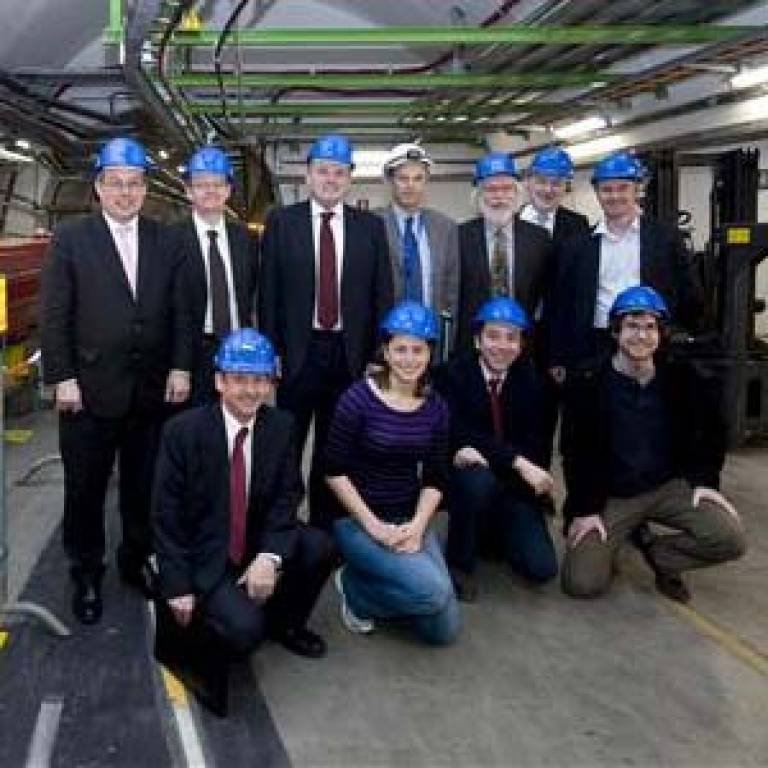UCL scientists welcome Minister for Science & Innovation to CERN
30 April 2008
Links:
 hep.ucl.ac.uk/" target="_self">UCL High Energy Physics Group
hep.ucl.ac.uk/" target="_self">UCL High Energy Physics Group
Head of the UCL High Energy Physics Group, Professor Jon Butterworth, and PhD student Ms Catrin Bernius (UCL Physics & Astronomy) took Dr Ian Pearson (UK Minister for Science & Innovation) on a guided tour of CERN, the world's largest particle physics laboratory and the ATLAS particle detector.
Based in Geneva, CERN is in the last phase of assembling the most powerful particle accelerator ever built, the Large Hadron Collider (LHC), which is set to dominate physics research for at least a decade when it starts up this summer.
It is expected to shed light on some of the most fundamental questions, including the origin of mass, the existence of extra dimensions, super-symmetry and the consistency of dark matter.
The ATLAS detector is the world's largest general-purpose particle detector, weighing 7000 tonnes with 100 million sensors that measure particles produced in proton-proton collisions in the LHC.
The UK is one of the founding Member States of CERN, and the British contingent is one of the largest of any country with around 650 British scientists and a further 250 staff members working there.
The UCL High Energy Physics Group is actively involved in many aspects of the ATLAS experiment. It is undertaking a variety of physics studies, and is active in the Standard Model, Higgs, and Supersymmetry and Exotics groups. In addition, it is a leading group in developing modern software for accessing and analysing the vast quantities of real and simulated data needed to make physics measurements in ATLAS. It also has a major contribution in the development of fast algorithms for online event selection in the ATLAS Trigger, and played an important role in building the Semiconductor Tracker for ATLAS, both in the mechanical design and in the electronic readout.
Dr Pearson said: "(The LHC) certainly has the potential to bring science to the public's attention in a way that hasn't been possible since the 1969 Moon landing. I have been tremendously impressed by all the work and enthusiasm displayed by everyone at CERN. The government continues to support fundamental science; the UK science budget has doubled since 1997 and will have trebled by 2010/11. Fundamental science provides the basis for all other sciences, carrying them along with it."
Professor Butterworth added: "It is great to see the minister visiting ATLAS - he really seemed to share our excitement about the fantastic things the LHC might do, and to appreciate that pushing the frontiers of physics is vital for the UK."
To find out more, use the links at the top of this article
Image: The UK delegation in the LHC tunnel (Ian Pearson, UK Minister for Science and Innovation (back row, third left), Professor Keith Mason, Chief Executive of STFC and former Head of the UCL Mullard Space Science Laboratory (back row, second from right), Professor Jon Butterworth (front row, second from right) and other British scientists working at ATLAS. (Copyright: CERN)
 Close
Close

